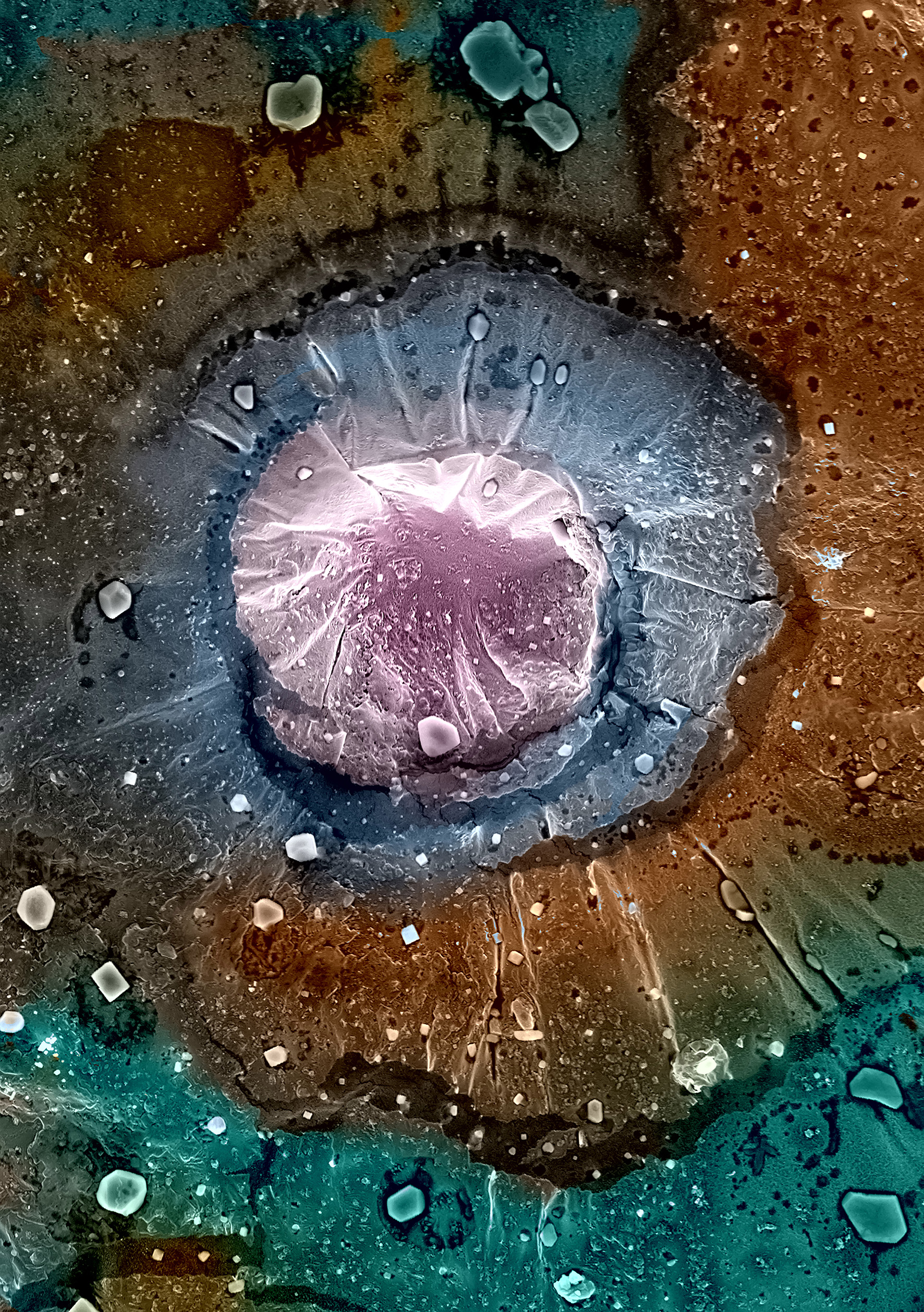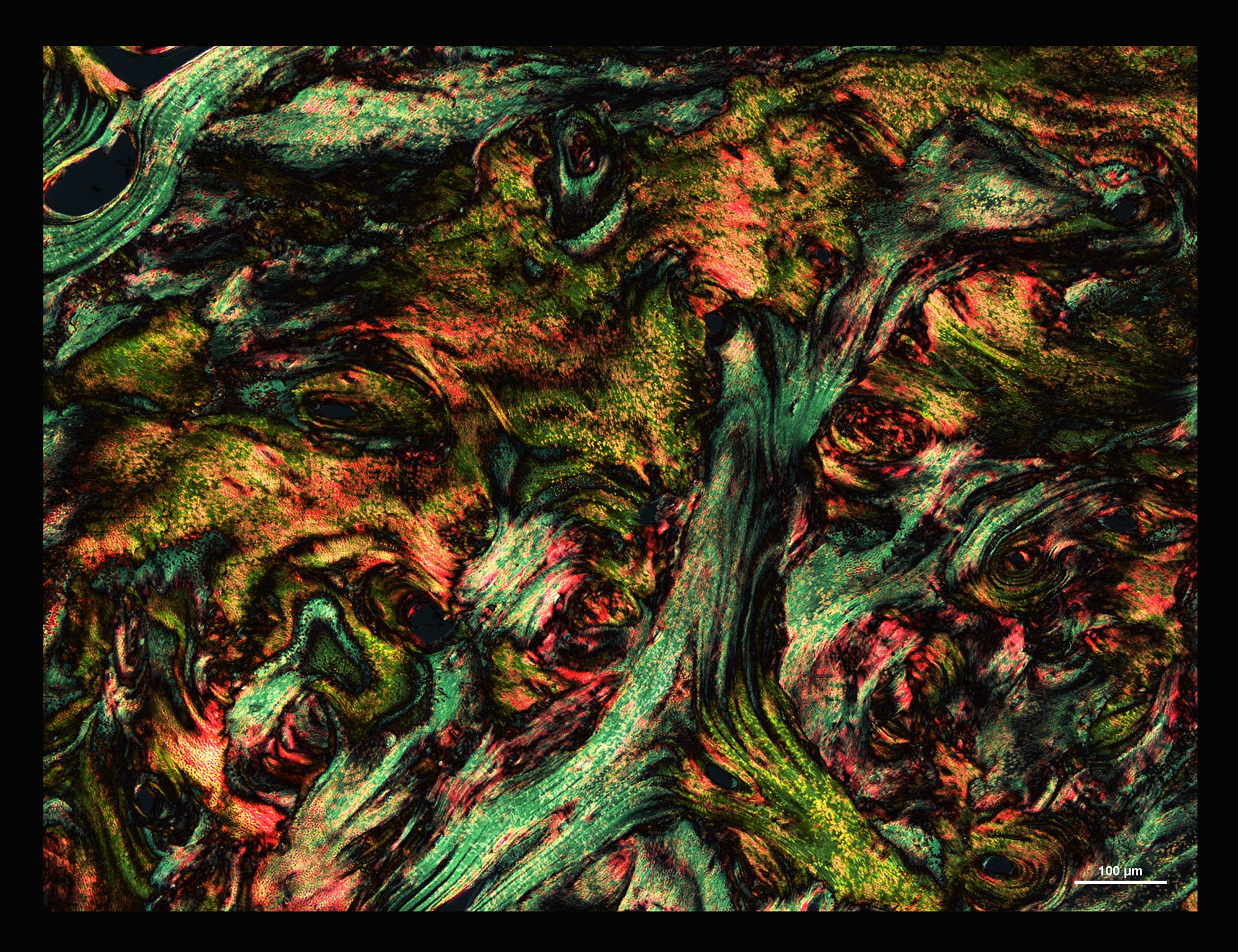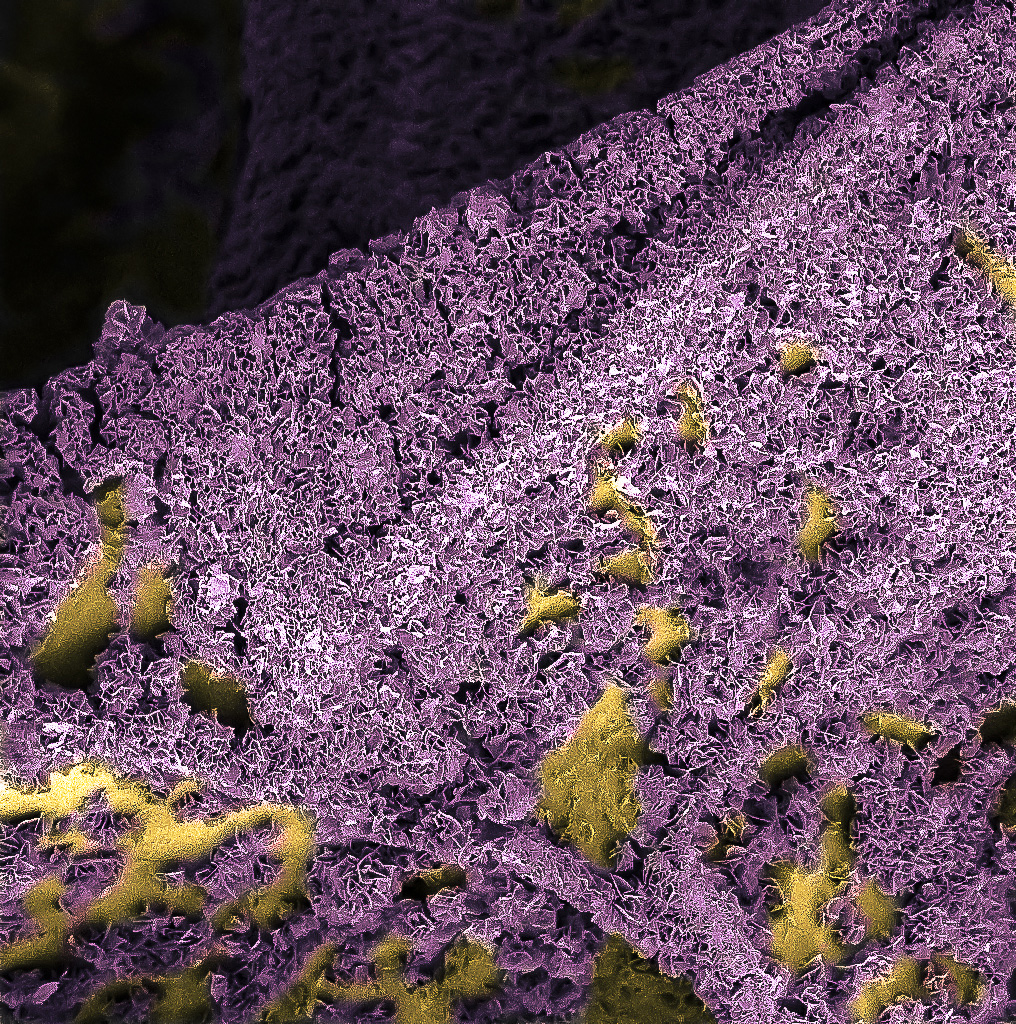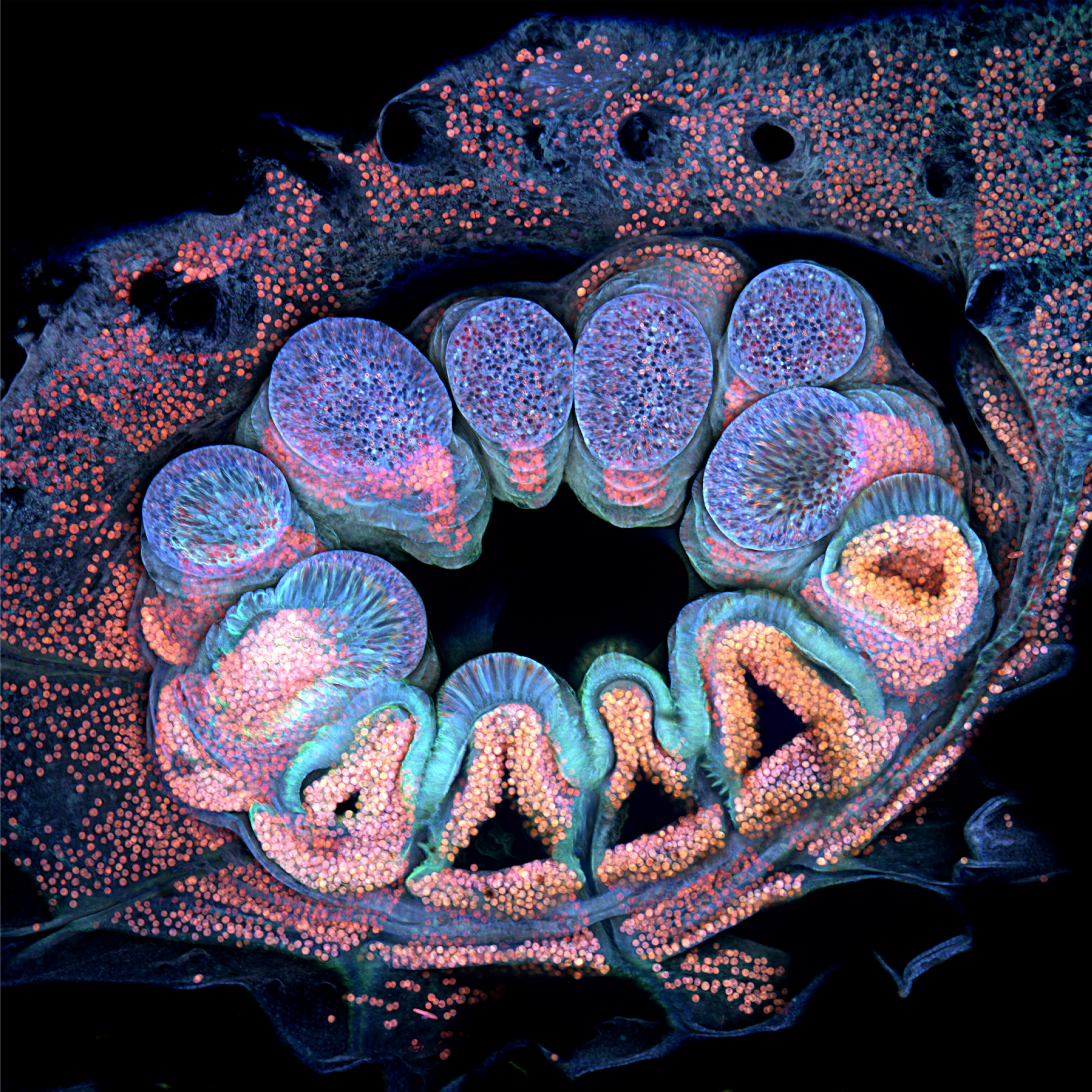This beautiful microscopic image of a coral polyp the size of a pinhead has won QUT’s 2021 Research in Focus competition.
The annual event profiles the university’s research through photos and video and this year attracted more than 100 entries from QUT researchers who captured intriguingly beautiful moments inspired by their work.
PhD student and coral reef researcher Brett Lewis (Faculty of Science) took out first prize with “Collaborative Coral”, an image showcasing the glowing pastel tones of the tiny organism’s fluorescent molecules.
He used an optical imaging method commonly used in biology called confocal fluorescence light microscopy.
The Research in Focus winners and finalists were last night shown at QUT’s The Cube – one of the world’s largest digital interactive learning and display spaces.
youtube video
Second place went to digital media and political manipulation researcher Dr Timothy Graham (Faculty of Creative Industries, Education and Social Justice (FCIESJ), for his “Twitter Map” of coordinated bot-like behaviour during the first 2016 US election presidential debate.
![Twitter map by Timothy Graham (CIESJ Faculty) [shows purple and red dots on black background]](https://www.qut.edu.au/news/news-image?image=148755.jpg)
Third place went to artist and data visualisation researcher Dr Anastasia Tyurina (FCIESJ) for her image of water droplets, inspired by her work merging art and science.

Judging panel member and Professor of Digital Media Jean Burgess praised the top three images and the entry field.
“It was wonderful to see so many high-quality entries showcasing some cutting-edge data visualisation techniques as part of the research process, as well as the effective visual communication of research outcomes,” she said.
“All three winners managed to do both exceptionally well, and the results are compelling, intriguing, and very beautiful.”
The judges also selected a winner for the Centre for Materials Science Award. It went to “Metal Eggs”, an image by PhD researcher Tristram Jenkins (Faculty of Science) that uses colours to represent the four metal components of high-Ni NMC – a material in lithium-ion batteries.
Panel member Professor Dmitri Golberg, who is an internationally-recognised materials scientist and physicist, said Metal Eggs was a “perfect match” to the Centre for Materials Science’s expectations of curiosity-driven research.
“It’s a very good example of deep and thoughtful battery research, technological importance, an original idea of presenting, perfect colour selection and an arresting eye-catching image,” he said.
There were also two popular vote awards.
Bone defects researcher Dr Flavia Savi (Faculty of Engineering) was announced as the winner of the Researcher Choice Award for “Bone jungle” – a light polarised image showing new bone tissue growing over a tibial bone defect reconstructed with a polycarbonate mesh scaffold.

The People’s Choice Award went to another close-up of human bone – “Flowers of bone regeneration” by Dr Jayanti Mendhi (Faculty of Engineering).

First place winner Brett Lewis’s coral image was inspired by the natural collaboration that has enabled reef-building coral to successfully exist since the age of the dinosaurs.

“Most coral has a symbiotic relationship with photosynthetic algae called symbiodinium – you can see these as the red/pink dots in this image,” he said.
“The coral ‘host’ provides the algae with shelter and nutrients. In return, the algae turn sunlight into sugars, providing the coral with energy.
“This partnership has helped corals prevail, adapt, recover and dominate throughout Earth’s history.
“However, as climate change accelerates, the deterioration of this relationship leads to increased bleaching and death.
“If and how this relationship adjusts over time is essential globally to researchers, reef managers and industries.”
Mr Lewis is a QUT applied science graduate who majored in environmental science, before completing his Masters and then embarking on his PhD.
Between his undergraduate and postgraduate studies, he spent four years on the Great Barrier Reef diving and teaching tourists and locals about the Great Barrier Reef ecological and sociological importance.






